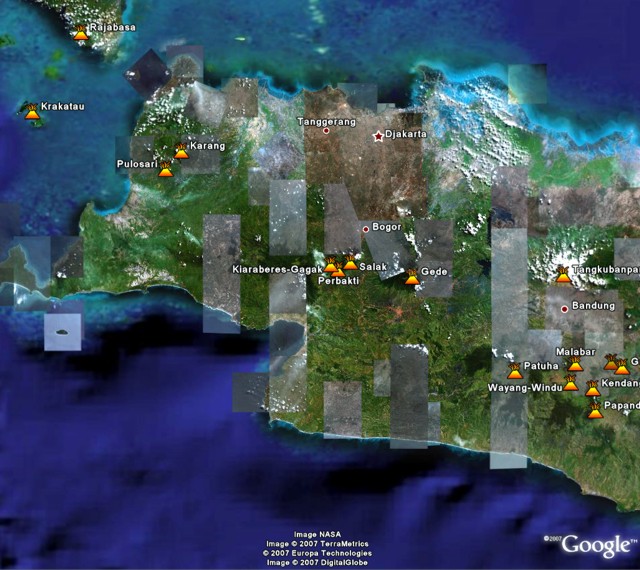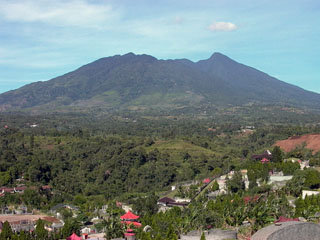Report on Salak (Indonesia) — September 2007
Bulletin of the Global Volcanism Network, vol. 32, no. 9 (September 2007)
Managing Editor: Richard Wunderman.
Salak (Indonesia) Six gas-related fatalities during July 2007
Please cite this report as:
Global Volcanism Program, 2007. Report on Salak (Indonesia) (Wunderman, R., ed.). Bulletin of the Global Volcanism Network, 32:9. Smithsonian Institution. https://doi.org/10.5479/si.GVP.BGVN200709-263050
Salak
Indonesia
6.716°S, 106.733°E; summit elev. 2218 m
All times are local (unless otherwise noted)
The last eruption at Salak, a stratovolcano near the W end of Java (figure 1), was in 1938, and the volcano remains in repose. According to news articles, sulfur-gas poisoning from a fume-filled crater was suspected in the deaths of six teenagers on 7 July 2007. The victims, who were between the ages of 14 and 16, were part of a group of about 50 students camping on the volcano for the weekend. Several more poisoned students were taken to a nearby hospital for treatment.
 |
Figure 1. Satellite imagery from Google Earth showing Salak (center, ~60 km SSW of Jakarta) and other volcanoes of western Java. Courtesy of Google Earth. |
Geological Summary. The forested Salak volcano was constructed at the NE end of an eroded volcanic range. Satellitic cones occur on the SW flank and at the northern foot, and two large breached craters truncate the summit. One crater is breached to the NE and the westernmost crater was the source of a debris-avalanche deposit that extends 10 km WNW of the summit. Phreatic explosions have been recorded from a solfataric area at 1,400 m on the western flank. Salak volcano has been the site of extensive geothermal exploration.
Information Contacts: Reuters (URL: http://www.reuters.com/); Asia-Pacific News (URL: http://www.asiapacificnews.com/); Associated Press (URL: http://www.ap.org/); Deutsche-Presse Agentur (URL: http://www.dpa.de/).

